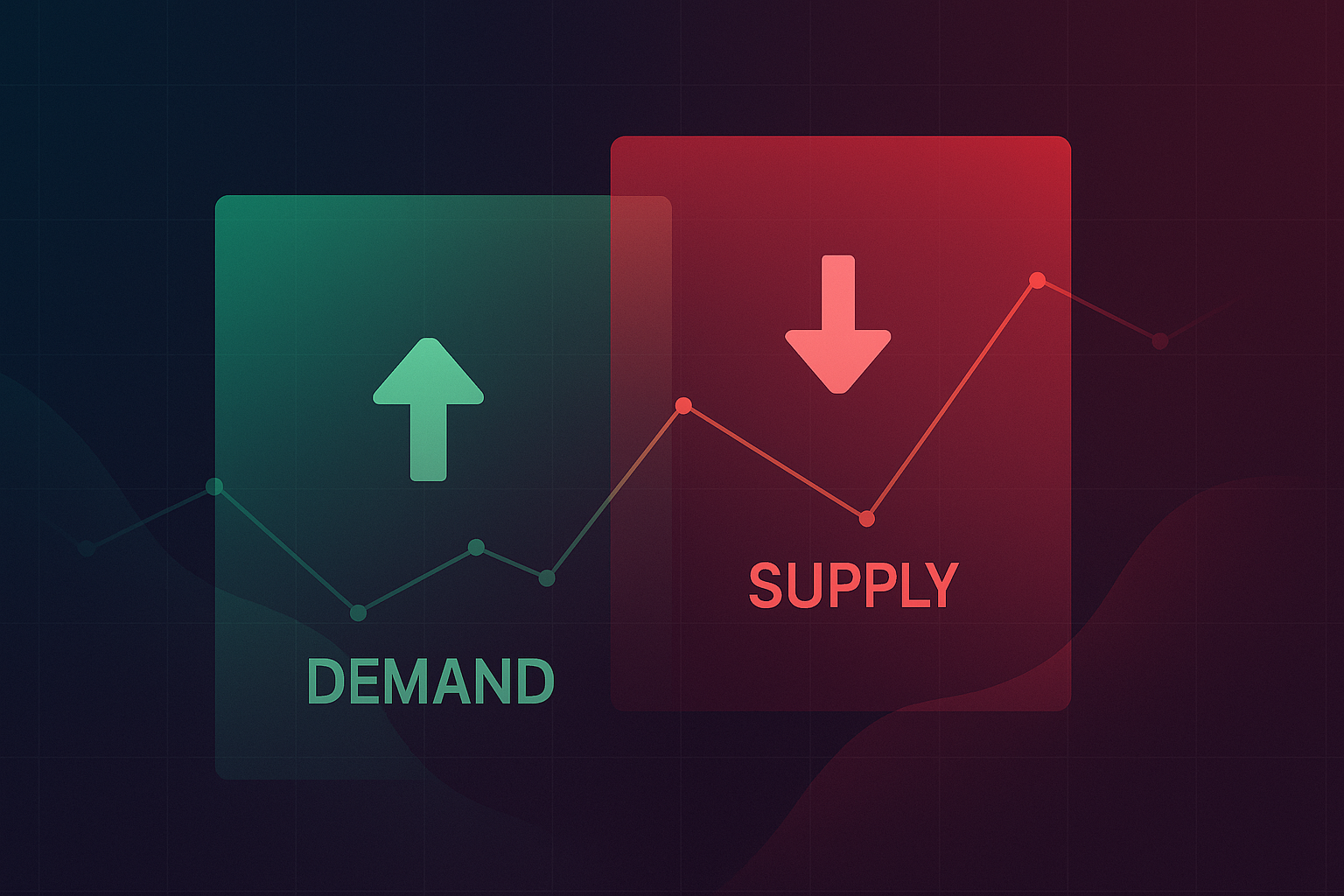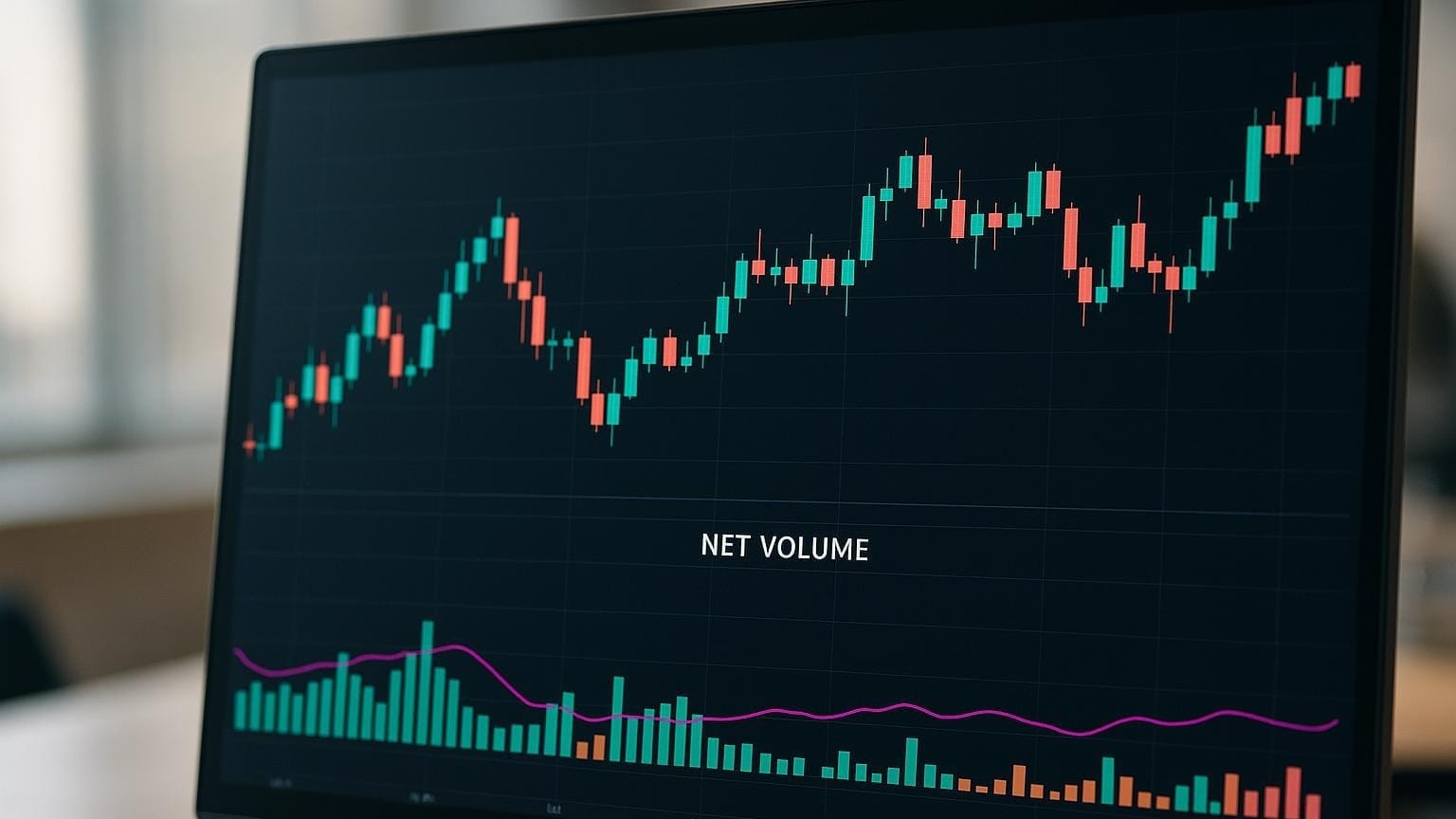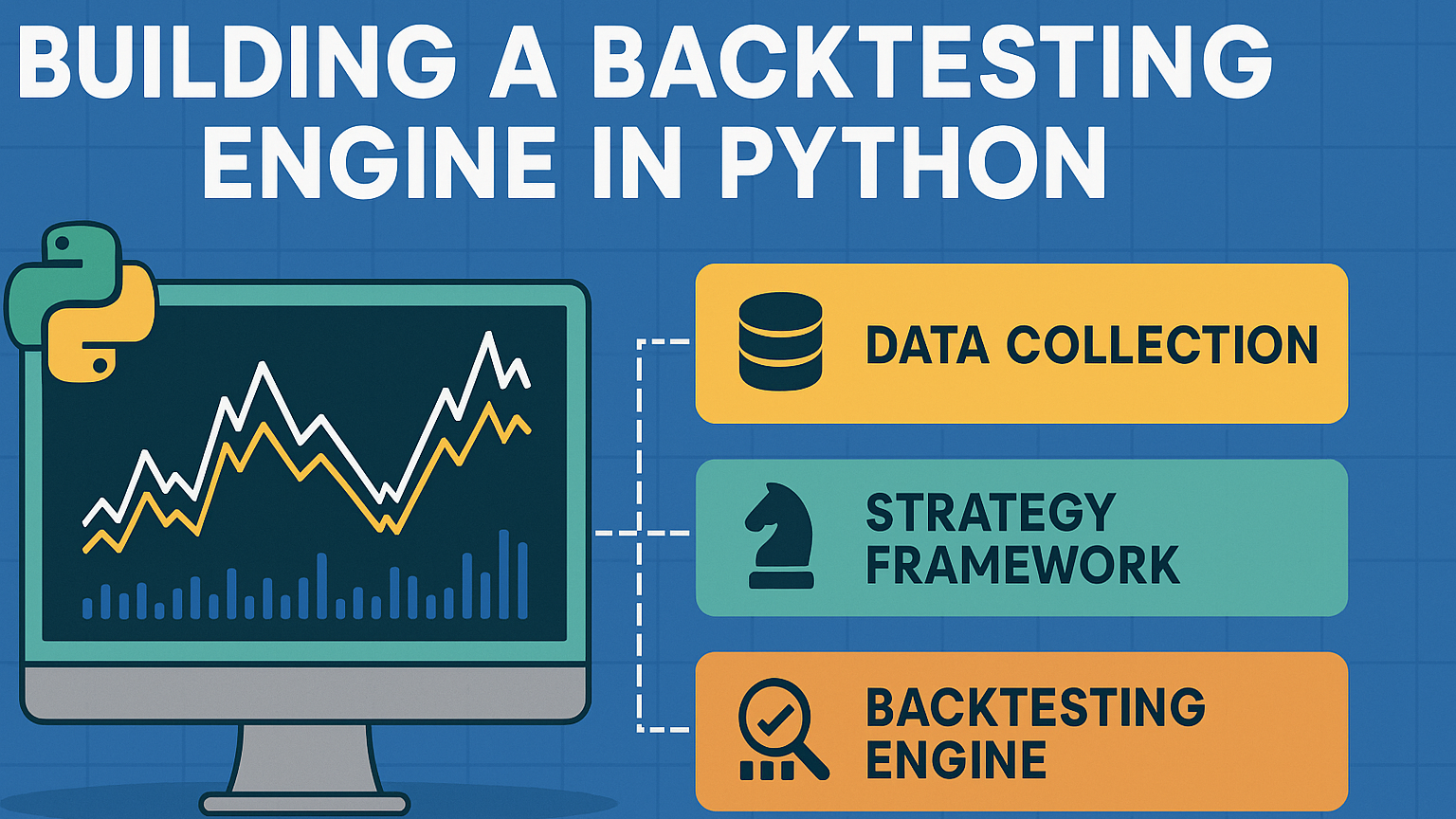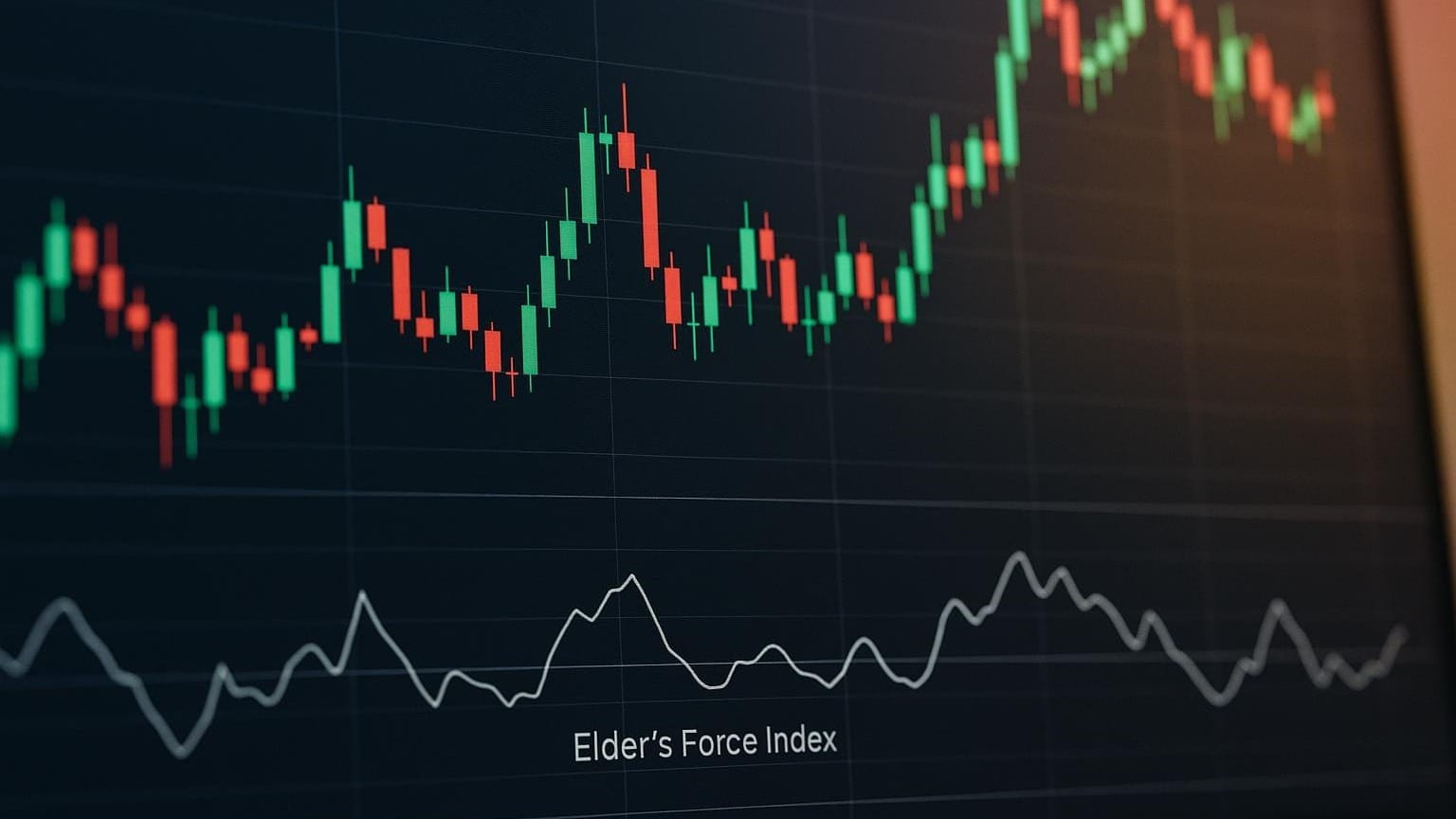Learn how to identify and trade supply and demand zones for better market insights and profitable trading strategies.
Supply and demand zones are crucial areas on a price chart where heavy buying or selling pressure causes significant price moves. Traders use these zones to identify entry and exit points, manage risk, and predict potential reversals or breakouts. Here's what you need to know:
- Demand Zone: Area of high buying pressure; prices likely to rise.
- Supply Zone: Area of high selling pressure; prices likely to fall.
- Key Difference: Unlike fixed support/resistance levels, these zones are dynamic and span a range of prices.
Quick Overview:
- Spotting Zones: Look for sharp price moves like Rally-Base-Rally (demand) or Drop-Base-Drop (supply).
- Strategies: Use bounce, breakout, or reversal tactics for trading within or around these zones.
- Confirmations: Volume indicators, price action tools, and heatmaps help validate zones.
- Risk Management: Place stop-loss orders near zone boundaries to limit losses.
Understanding and leveraging supply and demand zones can improve your trading accuracy and decision-making. Let’s dive deeper into how they work and how to use them effectively.
Complete Supply & Demand Trading Course
Finding Supply and Demand Zones
Supply and demand zones reveal areas where market imbalances lead to sharp price changes. Here's how to identify and analyze these zones effectively.
3 Steps to Spot Zones
- Look for patterns like Rally-Base-Rally for demand zones and Drop-Base-Drop for supply zones.
- Evaluate breakout moves – a strong price move out of a consolidation base signals clear buyer or seller dominance.
- Validate zones by checking historical price levels and multiple touches for confirmation.
Best Tools for Zone Analysis
Leverage the Price Action Concepts exclusive toolkit on TradingView for automated pattern detection and order block analysis. The library of free indicators also offers heatmaps and volume overlays for deeper insights.
| Tool Type | Purpose | Key Benefits |
|---|---|---|
| Volume Indicators | Check zone strength | Highlights actual trading volume |
| Price Action Tools | Spot price patterns | Pinpoints key reversals |
| Heatmap Analysis | Visualize zones | Shows high trading activity areas |
Once you've identified zones, you can focus on creating trading strategies tailored to these insights.
Common Zone Marking Mistakes
- Drawing zones too narrowly can overlook critical price areas with significant order flow.
- Ignoring broader market context can lead to poor decisions within a trading strategy.
- Skipping confirmation increases the risk of relying too heavily on historical levels alone.
Trading with Supply and Demand Zones
Supply and demand zones can lead to profitable trades if paired with clear strategies. Here are three key methods to make the most of these zones.
Price Bounce Strategy
This approach involves entering buy positions just above demand zones or sell positions just below supply zones. Confirm your entry with volume trends and candlestick patterns. Always place stop-loss orders slightly beyond the zone and size your position based on volatility and zone strength.
| Component | Entry Criteria | Risk Management |
|---|---|---|
| Buy Setup | Above demand zone with volume confirmation | Stop-loss just below the demand zone |
| Sell Setup | Below supply zone with resistance rejection | Stop-loss just above the supply zone |
| Position Size | Adjusted for zone strength and volatility | Risk limited to 1–3% per trade |
Zone Breakout Strategy
Breakout trading focuses on spotting when an asset’s price moves decisively beyond a key support or resistance level. For example, if a support level is retested and then broken downward, it signals a sell opportunity. Place sell stops just below the broken support, confirm the breakout with increased volume, and set profit targets based on the height of the breakout pattern.
Zone Reversal Strategy
Reversals occur when market sentiment shifts, offering high-probability setups. For instance, a Tweezer Tops pattern near $27,450 suggested a reversal. A short position was entered at that level with a stop-loss about 2% higher (around $28,000). Position sizing was determined using ATR-based methods. Confirmation came from a volume spike and a bearish candlestick pattern.
"Avoiding a loss takes priority over improving gains. To make up for a 95% loss in value requires the investor to make an astounding gain of 1900%."
Advanced Zone Analysis Methods

Using Multiple Indicators
Pairing supply and demand zones with technical indicators can boost accuracy. The Signals & Overlays toolkit helps confirm setups. Start by using the Money Flow indicator from the Oscillator Matrix toolkit. For example, if Money Flow shows weakness near a supply zone, it often suggests a higher chance of price rejection.
| Zone Type | Primary Confirmation | Secondary Confirmation | Action Signal |
|---|---|---|---|
| Supply Zone | Money Flow showing weakness | Hyper Wave Oscillator red dot | Possible short entry |
| Demand Zone | Money Flow trending upward | Hyper Wave Oscillator above 50 | High-probability long setup |
| Overflow Zone | Money Flow overflow | High-frequency reversal signal | Local top indication |
Multi-Market Zone Trading
Supply and demand zones work across different markets, but each asset has unique traits. In a Rally-Base-Rally (RBR) pattern, the base often forms a dependable demand zone that acts as support on a retest. In crypto trading, focus on high-volume areas that highlight concentrated buying or selling activity.
Results Tracking Methods
Once you've refined your zone analysis, track your performance carefully. Many traders have found success using supply and demand zones. The AI Backtesting platform offers detailed, multi-timeframe evaluations of your zone strategies.
- Take screenshots of trades, highlighting zones and key indicators.
- Log metrics like win rate, risk-reward ratio, and maximum drawdown.
- Identify which setups work best in specific market conditions.
"For your own style of trading and strategy, the only way to know for sure if the use of supply and demand zones would improve your trading results is to backtest it."
Summary
Supply and demand analysis remains a key strategy in tactical trading, offering insights into market behavior and price movements.
Main Points
Supply and demand zones are areas where institutional orders gather, often leading to price reversals. Unlike traditional support and resistance levels, these zones are broader and reflect shifts in market sentiment. They work best in high-liquidity markets where strong buying or selling pressure exists.
Trading with supply and demand zones depends on three main aspects:
| Component | Key Consideration | Implementation |
|---|---|---|
| Zone Identification | Price action and volume | Identify areas where price has stalled or reversed, signaling institutional activity |
| Trade Confirmation | Technical indicators | Use tools like momentum and volume indicators (e.g., Chaikin Money Flow, Awesome Oscillator) to verify zones |
| Risk Management | Stop-loss placement | Place stop-loss orders near zone boundaries and define clear exit strategies |
For example, in USD/JPY trading, a demand zone might form where price has reversed previously, signaling strong buy orders. Combining multiple indicators to confirm these zones enhances trade accuracy.
Tools for Success
To simplify supply and demand trading, the Price Action Concepts exclusive toolkit on TradingView offers automated solutions for identifying and analyzing these zones. Additionally, the AI Backtesting platform, introduced in November 2024, provides access to over 1,000 backtested strategies. Traders can filter strategies by timeframe, risk level, and other preferences.
"Price action trading is a widely respected method for its simplicity & realistic approach to understanding the market itself. Price Action Concepts™ is an extremely comprehensive product that opens the possibilities for any trader to automatically display useful metrics for trading price action with enhanced details in each."
Combining these solutions with solid technical analysis and disciplined risk management can significantly improve trading outcomes. As TraderLion explains:
"Supply and demand zones are important for trading as they provide valuable information about market sentiment and potential price movements. Whether you are a range-bound trader or a breakout trader, identifying supply and demand is important to identifying trading opportunities."








